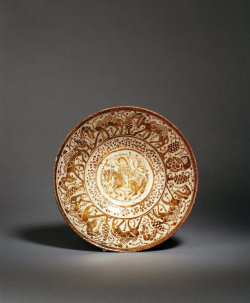The history of tile making : Tile making in Anatolia goes back to the "Uyghur Art". I believe this refers to the Karakhans Dyanasty which ruled central asia from 999 AD to 1211. Anatolia was highly influenced during this time from Central Asia. Many people and trade were coming from Central Asia and further east via the Silk road.
To understand the history of Turkish ceramics it is necessary to dive into the complex history of the endless struggle for power that took place on this soil. Turkey has the black sea, the bosphorus (the straight that connects the black sea to the mediterrean), the adriatic Sea, The Meditterean, the headwaters of the Tigris and the Euphrates. Understanding it as the heart land for trade between Asia and Europe, one can understand why so much blood has been spilled here. I am intested in the 9th- 13th centuries, because it is during this time that the pots that were being produced in the middle east reached its splendor. As an introduction so that this simplified historical explanation will have meaning here are some pots from the Abbasid Caliph.
And now from the Fatamids:
So what was going on in the world in the middle east when this work was being made?
In the 9th, 10th, and 11th centuries, the Islamic world was dominated by the Abbasids (centralized in Bahgdad). The Fatamids had power in Northern Africa, with Cairo as their capital. Under the Fatimids, Egypt became the center of the empire that included North Africa, Sicily, Palestine, Jordan, Lebanon, Syria, the Red Sea coast of Africa, Hajaz, and Yemen. They traded extensively in both the Mediterranean ocean and the Indian Ocean. The traded extensively with the Song Dynasty.
It might help to look at a map of the area to understand geographically how trade (ie ceramics and artistic ideas) was moving.
..............
The Seljuk State rose to power around this same time in what is current day Kazakhstan. By 1055 the Seljuk rulers had converted to Muslim and expanded itself to Baghdad, inserting its rule on the Abbasid Caliph. The Seljuks created the first Turkish State and named (first Iznik, just ..... kilometers from Constantinople, the Byzantine capital, then the Byzantines reinstated it as theirs) Konya as their capital. They brought Ismlam to Anatolina soil. They ruled from the 11th-12th century and conquered the Fatimids in the south. They had seized most of central Asia from Byzantine Rule. The Byzantine empire was the most powerful economic, cultual, amd military forces in Europe and had been for centuries. The Byzantine Empire fought to keep its capital in Constantinople (present day Istanbul).So during this time period, the capital of the Seljuk State, stretching from , and the capital of the Byzantine Empire, stretching from were both on today Turkish Soil. The population living on Turkish soil was diverse, with latin, byzantine, colonies of Venetian and Genoese merchants, the Greeks, Armenians, and Georgians, just to name a few. In 1300 Seljuk Empire met its demise and Anatolia was diveded up into independent states. The Byzantine Empire was weak. The Ottoman Empire rose to take advantange.
.
Ottoman Period tiles were made as a larger decorated tile instead of small mosaic tiles. By the 16th century colored glaze tiles were abandoned and underglazes were used to acheive color. The motifs chaned to various floweres- namely tulips, hyacinth, carnations, rose and rosebuds, iris, and narcissus, bunches of grapes, cypress, and rarely apple trees. The tiles of Topkap Palace display as a whole all the periods of the Ottoman art of tile making.
Here are some examples of some Islamic pots. These are borrowed from the internet.





























































